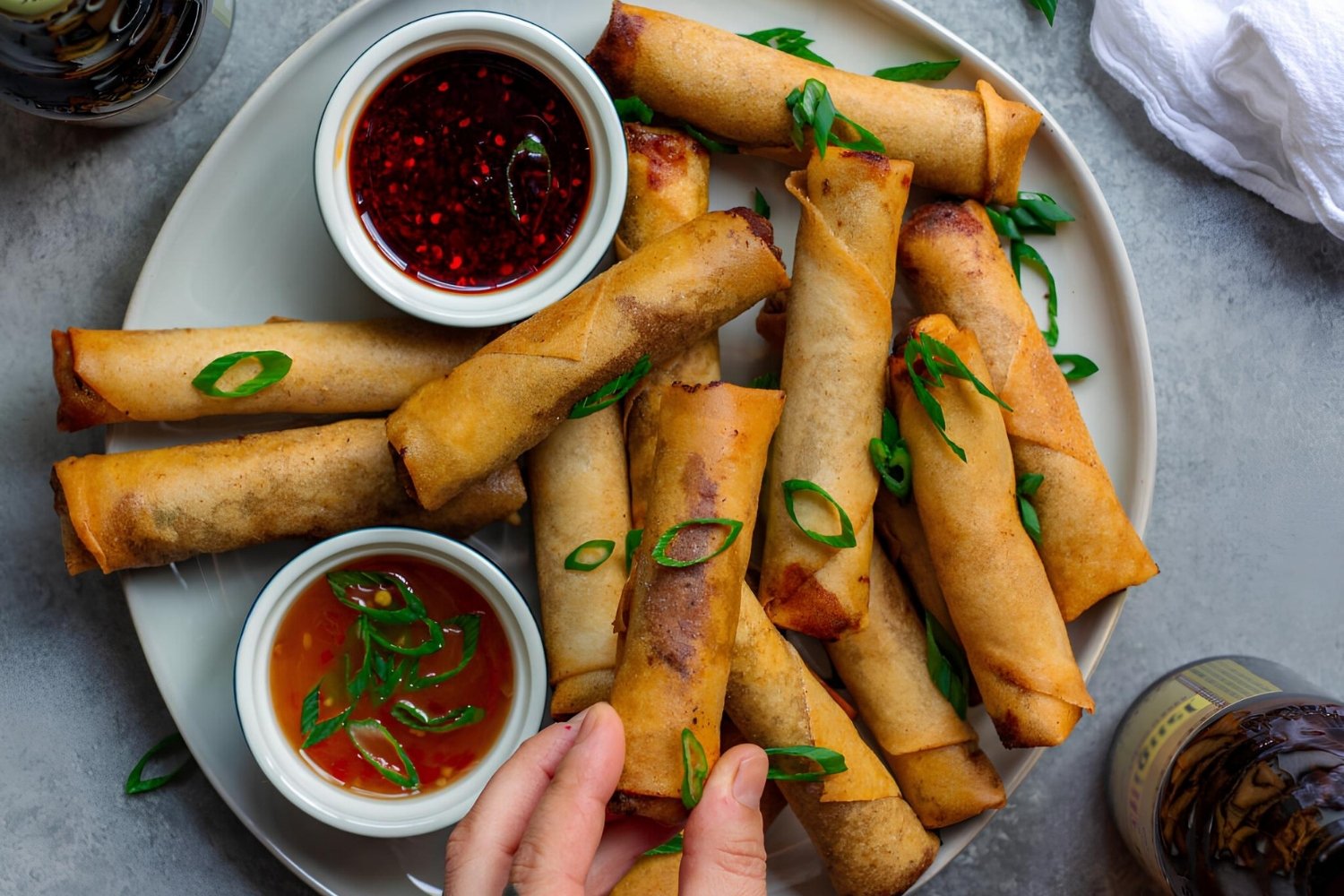
Lumpia is a delicious Filipino snack that has captured the hearts and taste buds of many around the world. But what exactly makes this dish so special? Lumpia is a type of spring roll filled with a variety of ingredients, from savory meats to fresh vegetables, all wrapped in a thin, delicate pastry. Originating from Chinese cuisine, it has been embraced and adapted by Filipino culture, resulting in numerous regional variations. Whether served fresh or fried, lumpia offers a burst of flavor in every bite. Curious about its history, ingredients, and preparation methods? Let’s dive into 25 fascinating facts about this beloved dish!
What is Lumpia?
Lumpia is a popular snack in many Southeast Asian countries, especially the Philippines and Indonesia. These delicious spring rolls are often filled with a variety of ingredients and can be served fresh or fried. Let's dive into some interesting facts about this beloved dish.
-
Lumpia Origins: Lumpia traces its roots to Chinese spring rolls, brought to Southeast Asia by Chinese immigrants.
-
Name Meaning: The word "lumpia" comes from the Hokkien word "lunpia," which means "soft cake."
-
Variety of Fillings: Lumpia can be filled with vegetables, meat, seafood, or a combination of these ingredients.
-
Popular in the Philippines: In the Philippines, lumpia is a staple at celebrations and gatherings, often served as an appetizer or snack.
-
Indonesian Twist: In Indonesia, lumpia is known as "lumpia Semarang," named after the city of Semarang where it is a popular street food.
Types of Lumpia
Lumpia comes in various forms, each with its unique preparation and ingredients. Here are some of the most popular types:
-
Lumpiang Shanghai: This is a Filipino version filled with ground pork, onions, carrots, and spices, then deep-fried to a crispy perfection.
-
Lumpiang Sariwa: Also known as fresh lumpia, this type is not fried and is filled with fresh vegetables and sometimes shrimp or pork.
-
Lumpiang Ubod: Made with heart of palm, this lumpia is often served fresh and wrapped in a soft, crepe-like wrapper.
-
Lumpiang Togue: Filled with mung bean sprouts, this lumpia is a healthier option and can be served fresh or fried.
-
Lumpiang Bangus: This version uses milkfish (bangus) as the main filling, offering a unique seafood twist.
Lumpia Preparation
Making lumpia involves several steps, from preparing the filling to wrapping and cooking. Here are some key facts about its preparation:
-
Wrapper Variety: Lumpia wrappers can be made from rice flour or wheat flour, each offering a different texture.
-
Rolling Technique: The rolling technique is crucial to ensure the filling stays inside and the lumpia holds its shape during cooking.
-
Frying Tips: When frying lumpia, it's important to use medium heat to cook them evenly and avoid burning the wrapper.
-
Fresh Lumpia Sauce: Fresh lumpia is often served with a sweet peanut sauce, adding a delicious contrast to the savory filling.
-
Freezing Lumpia: Lumpia can be prepared in advance and frozen, making it a convenient snack to have on hand.
Nutritional Facts
Lumpia can be a healthy snack, depending on the ingredients and cooking method. Here are some nutritional insights:
-
Low-Calorie Option: Fresh lumpia is generally lower in calories compared to fried versions.
-
Rich in Vegetables: Many lumpia recipes include a variety of vegetables, providing essential vitamins and minerals.
-
Protein-Packed: Lumpia filled with meat or seafood offers a good source of protein.
-
Healthy Fats: Using lean meats and healthy oils can make lumpia a nutritious option.
-
Customizable: Lumpia recipes can be adjusted to fit dietary preferences, such as using tofu for a vegetarian version.
Cultural Significance
Lumpia holds a special place in the hearts of many Southeast Asians. Here are some cultural aspects of this beloved dish:
-
Celebratory Dish: Lumpia is often served during festivals, birthdays, and other special occasions.
-
Family Tradition: Making lumpia is a common family activity, with each member helping in the preparation.
-
Street Food Staple: In many Southeast Asian countries, lumpia is a popular street food, enjoyed by people of all ages.
-
Symbol of Hospitality: Serving lumpia to guests is a sign of hospitality and warmth.
-
Global Popularity: Lumpia has gained international recognition, with many restaurants around the world offering their own versions.
Lumpia: A Delicious Journey
Lumpia, a beloved Filipino dish, has captured hearts worldwide. These tasty spring rolls, filled with a variety of ingredients, offer a delightful crunch and burst of flavor. Whether you prefer them fresh or fried, lumpia's versatility makes it a favorite at gatherings and celebrations.
Understanding lumpia's origins and variations enriches the experience of enjoying this dish. From the classic lumpiang shanghai to the fresh lumpiang sariwa, each type brings its own unique taste and texture. The dipping sauces, often sweet or savory, add an extra layer of deliciousness.
Making lumpia at home can be a fun and rewarding activity. With simple ingredients and easy-to-follow recipes, anyone can create these delightful rolls. So next time you're looking for a tasty treat, consider making or ordering lumpia. Your taste buds will thank you!
Was this page helpful?
Our commitment to delivering trustworthy and engaging content is at the heart of what we do. Each fact on our site is contributed by real users like you, bringing a wealth of diverse insights and information. To ensure the highest standards of accuracy and reliability, our dedicated editors meticulously review each submission. This process guarantees that the facts we share are not only fascinating but also credible. Trust in our commitment to quality and authenticity as you explore and learn with us.
